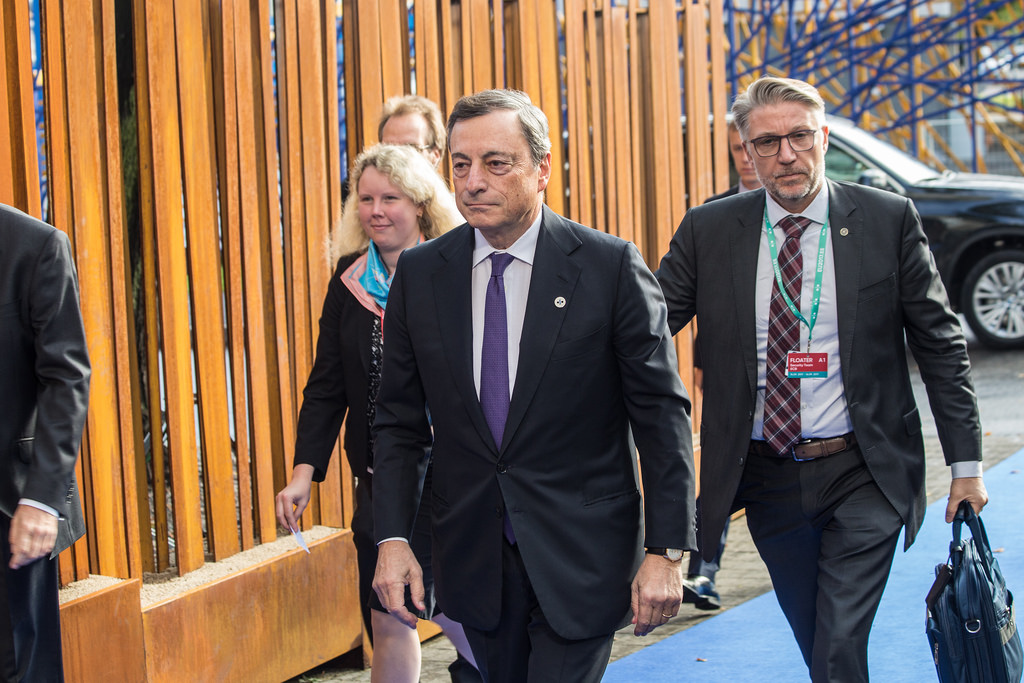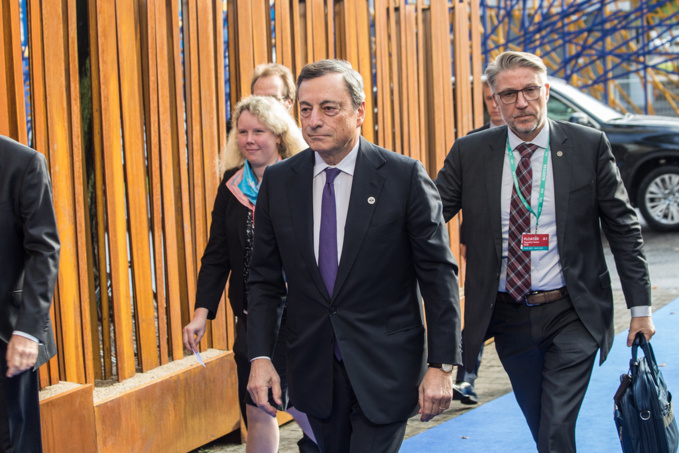The key question that the ECB meeting on the key rate, held on March, 7, had to answer was how serious the Eurozone issuing bank was about the problem of slowing economic growth in the EU in 2018-2019. There are more than enough of short-term reasons for the ECB not to touch the rates in March 2019. Among them are the threat of hard Brexit (the new agreement between the ECB and the Bank of England this week can be viewed as preparation for just such an option), and negotiations between the US and the PRC on the trade regime, which have not yet ended in anything. As for the latest news, there are falling quotes of a number of European banking groups (including Deutsche Bank and Raiffeisen) due to involvement in a scandal related to money laundering.
The negative news is not expected to change the fundamental indicators for the growth of the Eurozone economy. However, it has been more than enough in recent months, and the ECB’s decision to just leave rates was predictable and would not surprise anyone.
The scenarios that were expected from the ECB's board of directors were essentially reduced to two. First, the Central Bank of the euro area will keep the rhetoric of "uncertainty" on the eve of at least a temporary denouement of the Brexit scenario. Second, the new TLTRO-III EU bank incentive program will be announced (ECB's two-year loans on the best market conditions, actually free). This will be accompanied by rhetoric of future growth, although the ECB does not formally refer to this option as a relaxation of monetary policy.
At the press conference, Mario Draghi managed to perform both scenarios simultaneously and in the most unpleasant way: the ECB is pessimistic about markets, the euro area GDP growth forecast is reduced from 1.7% in 2019 to 1.1%, TLTRO -III is introduced since July 2019. Moreover, there will be no growth resulting from stimulation of the banking sector, according to Mr. Draghi. The ECB forecast for growth in 2020 has also been worsened, albeit symbolically. Besides, there won’t be any rate hikes until the beginning of 2020. At the same time, the ECB lowered its forecasts for inflation in the Eurozone for three years ahead, saying at the same time that the EU economy is still moving towards a target of 2%. The path will just take a little longer than expected.
In fact, all this represents a fairly simple picture: the current situation in the global economy is currently performing without major direct losses (the real effect of the trade wars of the USA and China is virtual for Europe, Brexit remains a serious, but still uncertain, threat, severity of the refugee crisis in the EU is subsiding, oil prices are moderate, internal differences within the European Union do not have the character of an acute conflict that can affect markets directly). However, economists should stay alert as there can be a significant drop in growth forecasts in Europe.
Nothing has really happened yet, but even the sentiment is a problem. What will happen to the euro if something really serious and badly predictable occurs?
On March 7 after the statements of Mario Draghi, the euro itself fell by 0.9% at the peak of the decline against the dollar, 0.6% per day. It is not much, but unexpectedness of this makes it possible to call the fall a “collapse”. In practice, this is quite a lot for the dollar-euro pair, and can be compared to the level of 2015.
Despite of everything said, Mario Draghi tried to add some consolation in his speech: the ECB sees softening of financing conditions in the Eurozone, the problem of unemployment in the EU is considered “structural” but not general economic, none of the members of the ECB board of directors believes in a quick recession in the Eurozone, decisions are taken unanimously. The whole problem, according to Mario Draghi, is “universal weakness and widespread uncertainty.”
source: economist.com
The negative news is not expected to change the fundamental indicators for the growth of the Eurozone economy. However, it has been more than enough in recent months, and the ECB’s decision to just leave rates was predictable and would not surprise anyone.
The scenarios that were expected from the ECB's board of directors were essentially reduced to two. First, the Central Bank of the euro area will keep the rhetoric of "uncertainty" on the eve of at least a temporary denouement of the Brexit scenario. Second, the new TLTRO-III EU bank incentive program will be announced (ECB's two-year loans on the best market conditions, actually free). This will be accompanied by rhetoric of future growth, although the ECB does not formally refer to this option as a relaxation of monetary policy.
At the press conference, Mario Draghi managed to perform both scenarios simultaneously and in the most unpleasant way: the ECB is pessimistic about markets, the euro area GDP growth forecast is reduced from 1.7% in 2019 to 1.1%, TLTRO -III is introduced since July 2019. Moreover, there will be no growth resulting from stimulation of the banking sector, according to Mr. Draghi. The ECB forecast for growth in 2020 has also been worsened, albeit symbolically. Besides, there won’t be any rate hikes until the beginning of 2020. At the same time, the ECB lowered its forecasts for inflation in the Eurozone for three years ahead, saying at the same time that the EU economy is still moving towards a target of 2%. The path will just take a little longer than expected.
In fact, all this represents a fairly simple picture: the current situation in the global economy is currently performing without major direct losses (the real effect of the trade wars of the USA and China is virtual for Europe, Brexit remains a serious, but still uncertain, threat, severity of the refugee crisis in the EU is subsiding, oil prices are moderate, internal differences within the European Union do not have the character of an acute conflict that can affect markets directly). However, economists should stay alert as there can be a significant drop in growth forecasts in Europe.
Nothing has really happened yet, but even the sentiment is a problem. What will happen to the euro if something really serious and badly predictable occurs?
On March 7 after the statements of Mario Draghi, the euro itself fell by 0.9% at the peak of the decline against the dollar, 0.6% per day. It is not much, but unexpectedness of this makes it possible to call the fall a “collapse”. In practice, this is quite a lot for the dollar-euro pair, and can be compared to the level of 2015.
Despite of everything said, Mario Draghi tried to add some consolation in his speech: the ECB sees softening of financing conditions in the Eurozone, the problem of unemployment in the EU is considered “structural” but not general economic, none of the members of the ECB board of directors believes in a quick recession in the Eurozone, decisions are taken unanimously. The whole problem, according to Mario Draghi, is “universal weakness and widespread uncertainty.”
source: economist.com



















